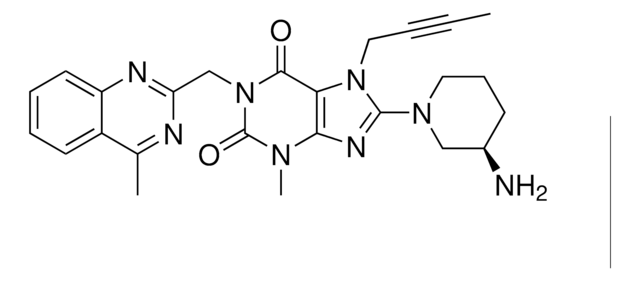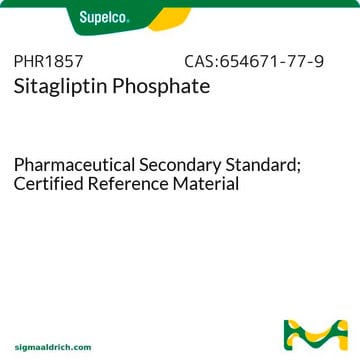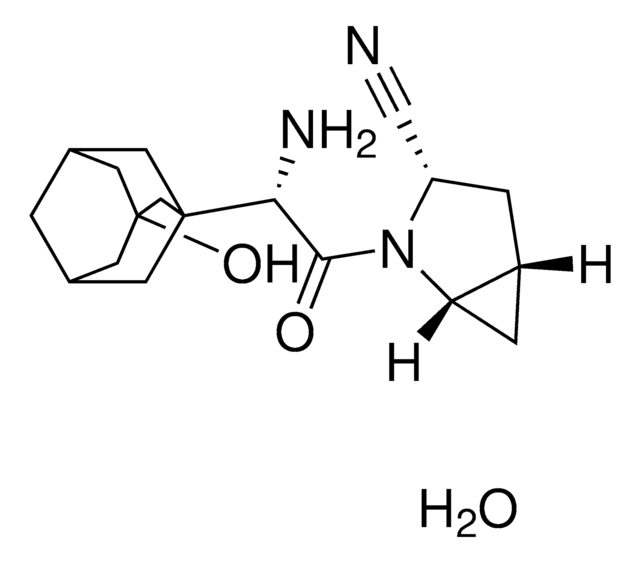SML3205
Sitagliptin
≥98% (HPLC)
Sinónimos:
(2R)-4-Oxo-4-[3-(trifluoromethyl)-5,6-dihydro[1,2,4]triazolo[4,3-a]pyrazin-7(8H)-yl]-1-(2,4,5-trifluorophenyl)butan-2-amine, (3R)-3-Amino-1-[5,6-dihydro-3-(trifluoromethyl)-1,2,4-triazolo[4,3-a ]pyrazin-7(8H )-yl]-4-(2,4,5-trifluorophenyl)-1-butanone,, MK 0431 free base, MK 431 free base, MK-0431 free base, MK-431 free base, MK0431 free base, MK431 free base
About This Item
Productos recomendados
Quality Level
assay
≥98% (HPLC)
form
powder
optical activity
[α]/D -17 to -23°, c = 0.5 in chloroform-d
color
white to beige
solubility
DMSO: 2 mg/mL, clear
storage temp.
−20°C
InChI
1S/C16H15F6N5O/c17-10-6-12(19)11(18)4-8(10)3-9(23)5-14(28)26-1-2-27-13(7-26)24-25-15(27)16(20,21)22/h4,6,9H,1-3,5,7,23H2/t9-/m1/s1
InChI key
MFFMDFFZMYYVKS-SECBINFHSA-N
Biochem/physiol Actions
signalword
Warning
hcodes
Hazard Classifications
Eye Irrit. 2 - STOT RE 2
target_organs
Liver
Storage Class
11 - Combustible Solids
wgk_germany
WGK 3
flash_point_f
Not applicable
flash_point_c
Not applicable
Certificados de análisis (COA)
Busque Certificados de análisis (COA) introduciendo el número de lote del producto. Los números de lote se encuentran en la etiqueta del producto después de las palabras «Lot» o «Batch»
¿Ya tiene este producto?
Encuentre la documentación para los productos que ha comprado recientemente en la Biblioteca de documentos.
Contenido relacionado
Explore protein pathway analysis through chemical library screening, investigating protein interactions, and modulating signaling pathways with small molecules.
El estudio de las vías proteicas es una parte fundamental de la investigación en el descubrimiento de fármacos y el desarrollo de medicamentos. Explore más sobre el análisis de las vías proteicas, incluidos el cribado de quimiotecas, la investigación de la actividad de proteínas y enzimas, y la modulación de las vías proteicas mediante la utilización de moléculas pequeñas.
Nuestro equipo de científicos tiene experiencia en todas las áreas de investigación: Ciencias de la vida, Ciencia de los materiales, Síntesis química, Cromatografía, Analítica y muchas otras.
Póngase en contacto con el Servicio técnico










